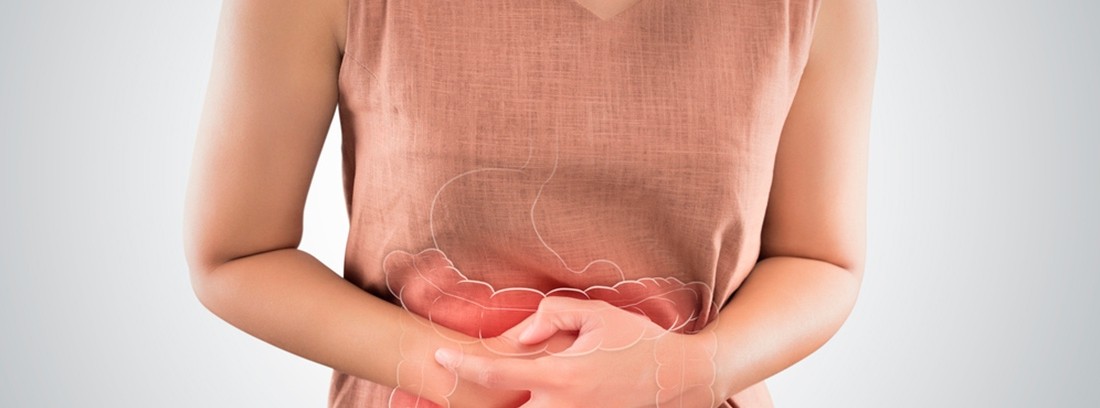Ulcerative colitis

What is it?
Ulcerative colitis along with Crohn's disease belongs to a group known as chronic inflammatory bowel diseases in which inflammation of certain segments of the digestive tract occurs. In ulcerative colitis, the mucosa of the large intestine (colon) is affected, causing ulcerations and inflammation of the same. It generally affects the entire colon but the extent of the lesion can be variable, for example, we speak of proctitis if it only affects the rectum.In Crohn's disease, any section of the digestive tract can be affected, this includes from the mouth to year. They are chronic diseases that usually affect young people (especially between 15-30 years of age).
How is it produced?
The cause of inflammatory bowel disease is not known. Genetic, immunological, environmental, and infectious factors have been implicated. On the other hand, there are a series of predisposing factors to suffer from it, such as being white, living in the first world and having first-degree relatives who suffer from the disease.
Symptoms
In the case of ulcerative colitis, the most frequently affected part of the colon is the last portion (called the rectus-sigmoid). The disease presents with flares, that is, episodes of inflammation that manifest with symptoms and that can last weeks or months and other asymptomatic periods.
The main symptoms described are bloody or mucosanguinous diarrhea, rectal bleeding (rectal bleeding) and fever. Abdominal pain and weight loss may also appear, depending on the severity and number of outbreaks of the disease.
The most important complications of this disease are the presence of massive hemorrhage, toxic megacolon, abdominal perforation and colon cancer. In addition, this disease can have extra-intestinal manifestations such as involvement of the skin, the joints (inflammation), the liver and the eyes.
Diagnosis
The diagnosis is based on the medical history, laboratory data, and the findings of specific digestive tests, including endoscopy and radiological studies.
- In blood tests, the parameters that indicate inflammation may appear increased and anemia may be detected.
- Stool cultures should be performed to rule out infectious diseases that are causing the symptoms of diarrhea, fever, and bleeding.
- Sigmoidoscopy or colonoscopy with mucosal biopsy are the diagnostic examinations of choice. By performing a colonoscopy, the inflamed and ulcerated appearance of the intestinal mucosa is checked and samples (biopsies) can also be taken for study under a microscope.
- The barium enema is less useful. It allows you to see the extent of the lesions and if there are narrowing (stenosis).
- Plain abdominal radiography is indicated only if there is suspicion of perforation.
Treatment
Treatment aims to control symptoms during the flare or acute episode of the disease and to control relapses. Treatment may differ from one patient to another depending on the severity and characteristics of each case.
1. General measures
- The patient should avoid possible triggers such as infections (respiratory or intestinal) and non-steroidal anti-inflammatory drugs.
- There are no specific dietary recommendations, except to follow a complete and balanced diet rich in fiber since no harmful food has been identified in patients or that determines the appearance of an outbreak. The diet does not modify the evolution of the disease in the long term, but nutritional supplements and advice from a nutritionist may be necessary. In certain cases, parenteral (intravenous) or enteral nutrition (through a nasogastric tube with specially prepared porridges) must be chosen.
- Patients should not self-medicate as it can be counterproductive and cause imbalances in the intestinal flora.
- It is recommended to avoid stress and get enough sleep.
- For relief of pain and diarrhea, antidiarrheal and antispasmodic drugs may be prescribed.
2. Pharmacological treatment
Pharmacological treatment is administered both in flare-ups and in asymptomatic periods, and is called maintenance treatment. Generally, in outbreaks, more active treatment is necessary and even in severe cases, hospitalization is necessary. In the asymptomatic phases, the patient must continue receiving maintenance treatment to reduce relapses. There are various treatment options that include drugs with a local anti-inflammatory effect, corticosteroids, immunosuppressants, and antibiotics. Some of these drugs can be administered orally or in the form of enemas, the latter being especially suitable when the disease affects the sigmoid and rectum.
During acute outbreaks of the disease, corticosteroids are especially used, due to their anti-inflammatory activity and their ability to slow down the immune response. Corticosteroids can be administered orally or in the form of enemas. In maintenance treatment, derivatives of salicylic acid (5-ASA), such as mesalazine, are usually used.
3. Surgical treatment
Treatment with surgery is reserved for the treatment of complications: intestinal perforation, hemorrhage, fistulas, etc. Surgery can also be used in severe ulcerative colitis, in which by completely removing the colon (colectomy), the disease is cured. It is not performed on a regular basis and is reserved for severe cases in which there is no adequate response to medical treatment. Surgery also plays an important role in the treatment of complications: intestinal perforation, hemorrhage, fistulas, etc.
(Updated at Apr 13 / 2024)